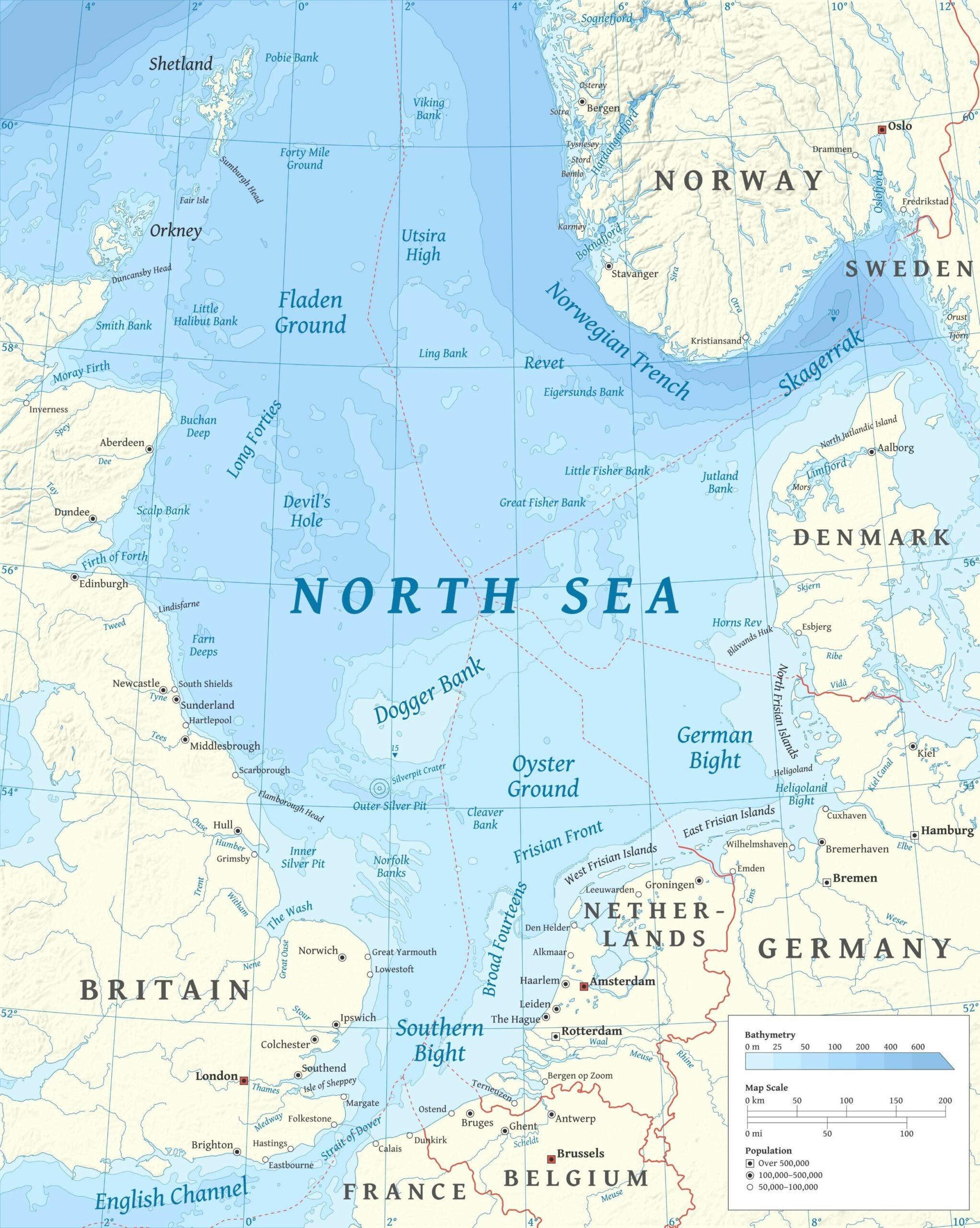
Introduction:
The North Sea, a vast expanse of water nestled between Northwestern Europe and the British Isles, stands as a maritime treasure trove. Renowned for its rich biodiversity and prolific marine life, the North Sea is celebrated as the largest fishing ground in the world. This extensive article delves into the historical significance, ecological diversity, economic importance, and contemporary challenges that define the North Sea as a vital hub for global fisheries.
I. Historical Significance:
- Seafaring Heritage: The history of the North Sea is intertwined with the seafaring heritage of coastal communities. From Viking longships to medieval fishing vessels, the North Sea has been a cradle of maritime exploration and a lifeline for communities dependent on its resources.
- Medieval Fishing Guilds: During the medieval period, fishing guilds and communities emerged along the shores of the North Sea. These guilds played a pivotal role in shaping fishing techniques, trade routes, and establishing the North Sea as a bustling center for maritime commerce.
II. Ecological Diversity:
- Biodiversity Hotspot: The North Sea is a biodiversity hotspot, supporting a diverse array of marine life. Its nutrient-rich waters foster the growth of phytoplankton, which, in turn, sustains a complex food web that includes fish, crustaceans, mollusks, and marine mammals.
- Fish Species: The North Sea is home to an extensive list of fish species, including cod, haddock, plaice, sole, mackerel, and herring. These species form the backbone of commercial fisheries, attracting fleets from countries across Europe.
III. Economic Importance:
- Commercial Fisheries: The economic importance of the North Sea lies in its thriving commercial fisheries. Fishing industries in countries such as the United Kingdom, Norway, Denmark, and the Netherlands rely heavily on the bountiful waters of the North Sea for their livelihoods and economic sustenance.
- Employment and Trade: Fishing communities along the North Sea coastlines provide employment for thousands of individuals engaged in various aspects of the fishing industry. Moreover, the abundance of seafood harvested from the North Sea contributes significantly to international trade, with fish products being exported globally.
IV. Fishing Techniques and Practices:
- Trawl Fishing: Trawl fishing, involving dragging nets along the seabed, is a prevalent technique in the North Sea. This method is often used for demersal fish species such as cod and flatfish, ensuring a substantial catch for the fishing fleets.
- Pelagic Fishing: Pelagic fishing, targeting fish that inhabit the open water, is another common practice in the North Sea. Herring and mackerel are prime examples of pelagic species that are commercially harvested using techniques such as purse seining and midwater trawling.
V. Regulatory Framework:
- Common Fisheries Policy (CFP): The management of fisheries in the North Sea is guided by the Common Fisheries Policy (CFP), a comprehensive regulatory framework established by the European Union. The CFP aims to ensure the sustainable exploitation of fish stocks, prevent overfishing, and promote ecosystem health.
- Quotas and Sustainable Practices: The implementation of fishing quotas, seasonal closures, and gear restrictions is integral to maintaining the delicate balance of the North Sea ecosystem. These measures are designed to prevent overfishing, protect vulnerable species, and promote sustainable fishing practices.
VI. Environmental Challenges:
- Overfishing Concerns: Despite regulatory efforts, overfishing remains a persistent challenge in the North Sea. The demand for seafood, coupled with advancements in fishing technology, poses a threat to the long-term sustainability of certain fish stocks.
- Climate Change Impact: Climate change is altering the conditions of the North Sea. Rising sea temperatures, changing currents, and ocean acidification have implications for the distribution and abundance of marine species, influencing the dynamics of the fishing industry.
VII. Conservation Initiatives:
- Marine Protected Areas (MPAs): Conservation initiatives include the establishment of Marine Protected Areas (MPAs) to safeguard critical habitats and provide refuge for marine species. MPAs contribute to biodiversity conservation and offer a buffer against the impacts of human activities.
- Scientific Research and Monitoring: Ongoing scientific research and monitoring programs play a crucial role in understanding the ecological dynamics of the North Sea. By collecting data on fish populations, environmental conditions, and ecosystem health, scientists contribute valuable insights to inform conservation strategies.
VIII. Future Perspectives:
- Adaptation to Climate Change: Future perspectives for the North Sea fisheries involve adapting to the impacts of climate change. Fishery management plans will need to incorporate strategies that account for shifting species distributions, altered migration patterns, and changing oceanic conditions.
- Innovation in Fishing Practices: Innovations in fishing practices, such as the adoption of more selective gear and technology, can contribute to sustainable fisheries management. Technological advancements in navigation, gear design, and fishery monitoring offer avenues for reducing the environmental impact of fishing activities.
IX. Cultural and Culinary Impact:
- Culinary Heritage: The North Sea’s bounty has left an indelible mark on the culinary heritage of the coastal communities that call its shores home. Traditional dishes, such as fish and chips, herring delicacies, and seafood stews, are culinary expressions of the region’s deep connection to the sea.
- Cultural Celebrations: Festivals and cultural celebrations along the North Sea coastlines often revolve around the sea and its offerings. These events celebrate the maritime heritage, fishing traditions, and the communal ties forged by generations of families engaged in the fishing industry.
X. Conclusion: Sustaining the Sea’s Legacy
In conclusion, the North Sea stands as a maritime marvel, embracing a legacy of ecological abundance, economic vitality, and cultural significance. Its distinction as the largest fishing ground in the world underscores the pivotal role it plays in global fisheries and the interconnectedness of coastal communities. As humanity grapples with the imperative of sustainable practices, the North Sea becomes both a testament to the sea’s resilience and a call to action for responsible stewardship. Balancing the needs of the present with the imperative to sustain the sea’s legacy requires a harmonious approach—one that honors the traditions of the past while charting a course for a future where the North Sea’s bounty remains abundant for generations to come.